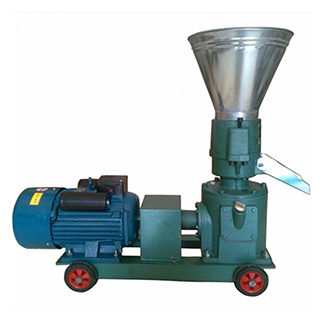
Rs. 100000.00
( Price inclusive of all taxes )
Availability: In stock
A successful livestock production largely depends on continues supply of adequate, balanced and economic feeding. Feeding alone accounts for more than 70 percent of the total cost of milk production; therefore, balanced feeding of dairy animals can play a pivotal role in a successful dairy development programme worldwide. To maximize profitability from the animals, one needs to ensure that these animals must receive the required quantity of protein, energy, minerals and vitamins, preferably from locally available feed resources. Complete feed block is composed of forage, concentrate and other supplementary nutrients in desired proportions capable to fulfil nutrient requirements.
Complete feed system is one of the latest developments to exploit the potential of animal feed resources in the best possible way. The complete feed is a quantitative mixture of all dietary ingredients, blended thoroughly to prevent separation and selection, fed as a sole source of nutrients except water and is formulated in a desired proportion to meet the specific nutrient requirements. The concentrate and roughage levels may vary according to the nutrient requirement of ruminants for different production purposes. The complete feed with the use of fibrous crop residue is a noble way to increase the voluntary feed intake and thus animal’s production performance.
Complete feed block have main two components, Major and Minor. The major components of compressed complete feed blocks are roughage and concentrate, added in different ratios, depending upon the level of production while the minor components of compressed complete feed blocks are micronutrients and feed additives.
The proportion of the straw and concentrate in the block varies with the type of the animals to which it is to be fed. As a survival ration for use during natural calamities and disasters, the straw component could be very high. To meet the challenges during emergency situations, straw blocks have generally the following composition: 86 parts straw, 10 parts molasses, 2 parts mineral mixture, 1 part urea and 1 part salt which could meet the maintenance requirement of the animals. The proportion of straw for animals yielding up to 5-10 kg milk per day, should be reduced to 60% for 10-15 kg milk per day, up to 50% and for 15-20 kg milk per day, up to 40%
The ingredients of the concentrate mixture are: oil cakes/meals as protein source: moiosses, grains, grain by products as energy sources and supplements such as bypass protein or bypass fat. Bypass nutrients can be added for the higher yields to enhance the direct supply of amino acids and fatly acids to the host annual as concentrated protein and energy sources respectively. The third component provides strategic and catalytic supplements such as micronutrients and other feed additives, for e.g. vitamins, minerals, betonies ( binder ), probiotics, enzymes, antioxidants, immune-protective agents, antitoxins and herbal extracts, among others. The varied role of these components in the feed block is to increase the productive and reproductive efficiency of the animal, enhance its immune-protective ability, reduce helminthic load and decrease luminal methanogenesis.
The first step in the process of making DCFBs is the grinding and mixing of concentrate ingredients separately. This is followed by adding concentrate components to chopped straw in desired proportions along with molasses in a mixer, taking care that mixing is uniform and ingredients are not separated due to gravity. Finally, the desired quantity of straw-concentrate mix is transferred to a hydraulic press to convert the mix into a block. Based on the productivity levels of animals, DCFBs could play an important role in providing balanced rations to livestock in the tropical regions of green forage scarcity. The technology offers a means to increase milk production, decrease in environmental pollutants, increase in income of farmers, decrease in labour requirement and time for feeding and reduction in transportation cost of straw. The technology also has the potential to provide complete feed to livestock under emergency situations created by natural calamities.
A 500 kg HF cow yielding 20 litres per day will require around 20 kg of green fodder (may be maize fodder), 2 kg of dry fodder, 9 kg of cattle feed (BIS type I) and 150 gm. of mineral mixture. Cost of individual feed items may vary from region to region, however, for your understanding we have assumed these cost as follows: